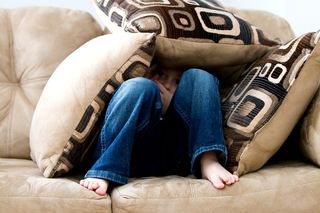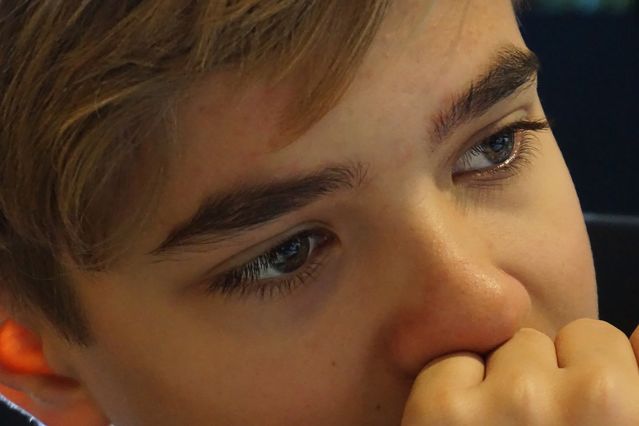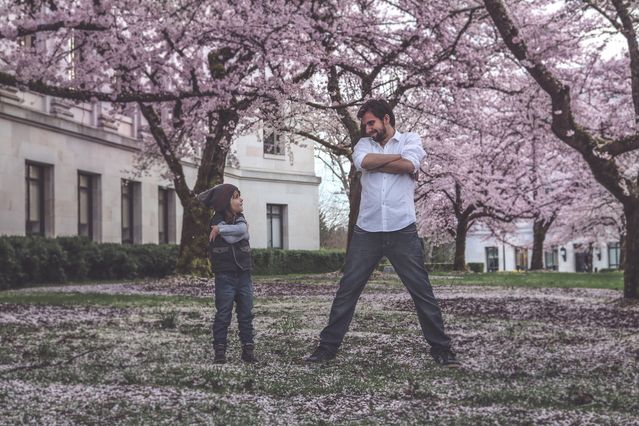Parenting
A Survival Guide for Parenting Through the Global Pandemic
A psychologist provides a guide to helping families through the crisis.
Posted April 2, 2020 Reviewed by Jessica Schrader

In December 2019, the world first took note of a novel virus that was highly contagious, sickening and killing thousands in rapid succession. By January 2020, coronavirus had spread across the globe, and within a few short weeks, taken the world by the storm in what is the first global pandemic of this magnitude for this generation since the 1918 flu epidemic.
For parents, the coronavirus global pandemic brings unprecedented challenges never experienced before in their families’ lives. Across the world, schools have closed or are closing so that children can remain home to avoid community spread. Parents have had to take on multiple roles, charged with their child’s learning while working or seeking jobs.
As these changes occur, often in rapid succession, it is normal for children and families to feel anxious or upset. The following is a brief guide to aid parents though this extraordinarily challenging period of time.
First: Talking to Your Child About the Coronavirus Pandemic
- Do talk to your child about the global pandemic; they have heard about coronavirus from peers, social media, or overheard your conversations about it. Remember how Voldemort was considered too terrifying to be discussed by name (thus referred to as "He Who Shall Not be Named")? When you avoid talking about coronavirus directly with your child, it sends a signal that it is unimaginably scary.
- Start with what your child knows and use this opportunity to dispel myths about the pandemic. It is common for children (and adults) to hear inaccurate or obsolete information about coronavirus. Do take this time to teach your child about "information literacy" and to understand the importance of obtaining information about the coronavirus from reliable sources. Try to be that source for your child if at all possible.
- Give developmentally age-appropriate information. Younger children may learn better from comic-strip or social stories, such as this highly recommended one from Manuela Molina's social story resource library.
- Do focus on what your child can control. Your child may have a sense of panic and feel a lack of control over their situation. Help them regain a sense of agency by refocusing on what they do have control over, such as their home routine or personal hygiene. Teach them how to wash their hands for 20 seconds in a thorough manner and to sneeze or cough into their elbow. Explain how they are helping others with social distancing. Allow them to collaborate on making the new home routine.
- Shine a spotlight on the helpers. When children hear about the helpers in the world, it provides hope. During this distressful time period, highlight the healthcare providers, grocery store workers, drivers, and all the essential workers who are helping to keep everyone in the community safe. University of Florida's Meet the Helpers is a great online resource that gives young children developmentally age-appropriate information on this global pandemic’s helpers.

Second: We’re All Home. Now What?
- Model resilience for your child. Children often look to their parents to guide their own emotional responses to stressors. It is helpful for parents to show an appropriate level of concern about the coronavirus, while at the same time, being mindful to not appear panicked.
- Help children manage their own emotions by encouraging them to identify their feelings. Studies show that when children are able to identify and understand their emotions, they are better able to regulate them. For younger kids, parents can use engaging videos such as this Inside Out video. For non-screen activities, a parent can adapt games, such as Emotions Charades, wherein each player acts out an emotion while the other guesses it. It is normal for children to have mixed emotions, such as feeling happy (e.g., because parents are home with them) and scared (e.g., because of the fear of getting ill).
- Do what is right for your family when it comes to your family routine. You may hear conflicting advice on keeping strict routine vs fostering unstructured time. For some families, it may be best to immediately start a structured routine and keep to it, while for others, it may be more helpful to allow more unstructured time initially so that each family member has time to adjust to all the changes. Do, however, consistently build in time for positive family-based activities, such as daily family walks, movie nights, or cooking together, as these serve as spotlight memories for your child when they recall this difficult time period.
- Encourage your child to connect socially with peers/extended family members. Be creative; using apps such as Zoom, Skype, Instagram Live, or Facebook Messenger may be required. While telephone or texting conversations are a great start, video-based communication (when possible) often provides a more intimate social connection because of nonverbal communication available via visual cues.
- Be a helper. Research shows that helping others can significantly improve one’s own mood. Facilitate your child in helping other people even while social distancing. Start with their interests, and brainstorm ideas, such as curbside donations to the Food Bank or connecting with the elderly in nursing homes via video chats. Choose activities that are based on your child’s strengths or interests (e.g., sewing masks, drawing cards).
- Teach “belly breathing” (aka diaphragmatic breathing). When individuals get anxious, they commonly experience shallow breathing and rapid heart rate. One powerful yet simple strategy to calm down their body is diaphragmatic breathing. There are easy-to-learn videos such as GoZen's 4-7-8 breathing that teaches this skill in a fun way. Practice daily.
- Limit television and online/social media coronavirus news. Because news tends to focus on the negative/sensationalistic aspects of the pandemic, it can cause increased anxiety and sadness. For children, developmentally inappropriate news can cause nightmares and mood lability.
- Monitor for sudden changes in behaviors/mood in your child. While it is common for children to exhibit anxiety and behavioral issues during this time period, watch for difficulty sleeping, changes in appetite, social withdrawal, mood fluctuations, or thoughts of self-harm. Seek professional help; there are telemental health providers available for consultation/treatment.

Lastly: Finding Meaning Through the Chaos
- Self-care: This is easier said than done. In parenting, we tend to put our child’s needs first. But during this pandemic, parents are struggling with sleep difficulties, financial concerns, information overload, health issues, and grief/trauma. It is paramount for parents to purposefully engage in self-care. Recall the safety briefing you undergo when you fly on a commercial airplane. The flight attendant always reminds parents to put the oxygen mask on themselves before placing on the child. Science-based coping strategies include mindfulness-based stress reduction, behavioral activation (e.g., exercising, hobbies), social connection, journaling (e.g., identifying thoughts/feelings), and adequate sleep.
- Building memories: These are historic times. Families are living through a time period unlike they've ever previously experienced. It can be meaningful and emotionally validating to record one’s experiences. Parents may reframe this experience for their child with a future-oriented perspective: Remind them that historians and future generations will highly value their present-day experiences. This should be a child-led activity and may be in the form of writing, drawing, video-recording, or even making memes. For younger children, here is a printable time capsule workbook designed specifically for this time period of coronavirus. When this moment in history ends, and life inevitably resumes back to the usual activities, your child/family’s journal will serve as a reminder of the personal resilience/strengths that were fostered and even inspired during this global pandemic.
Evidence-Based Parent Online Resource
Check Psychology Today’s directory of therapists for a professional near you.
References
Alexander R. Lucas, Heidi D. Klepin, Stephen W. Porges and W. Jack Rejeski, Mindfulness-Based Movement: A Polyvagal Perspective, Integrative Cancer Therapies, 10.1177/1534735416682087, 17, 1, (5-15), (2016).
Bunge, E.L., Beard, C.L., Stephens, T.N. et al. Mood Management Effects of a Brief Behavioral Activation Internet Intervention. J. technol. behav. sci. 2, 163–170 (2017). https://doi.org/10.1007/s41347-017-0026-2
Calear, A. L., Christensen, H., Mackinnon, A., Griffiths, K. M., & O’Kearney, R. (2009). The youth mood project: a cluster randomized controlled trial of an online cognitive behavioral program with adolescents. Journal of Consulting and Clinical Psychology, 77(6), 1021–1032. https://doi.org/10.1037/a0017391.
Isen, A. M., & Levin, P. F. (1972). Effects of feeling good on helping: Cookies and kindness.Journal of Personality and Social Psychology, 21 384–388.
Moore, B., Underwood, B., & Rosenhan, D. L. (1973). Affect and altruism.Developmental Psychology, 8 99–104.
Tonchev K., Balabanov G., Manolova A., Poulkov V. (2019) Personalized and Intelligent Sleep and Mood Estimation Modules with Web based User Interface for Improving Quality of Life. In: Arai K., Kapoor S., Bhatia R. (eds) Intelligent Computing. SAI 2018. Advances in Intelligent Systems and Computing, vol 858.
Visser P. et al. (1979) Sleep and Mood: Measuring the Sleep Quality. In: Priest R.G., Pletscher A., Ward J. (eds) Sleep Research. Springer, Dordrecht
Xiao Ma, Zi-Qi Yue, Zhu-Qing Gong, Hong Zhang, Nai-Yue Duan, Yu-Tong Shi, Gao-Xia Wei and You-Fa Li, The Effect of Diaphragmatic Breathing on Attention, Negative Affect and Stress in Healthy Adults, Frontiers in Psychology, 10.3389/fpsyg.2017.00874, 8, (2017).


